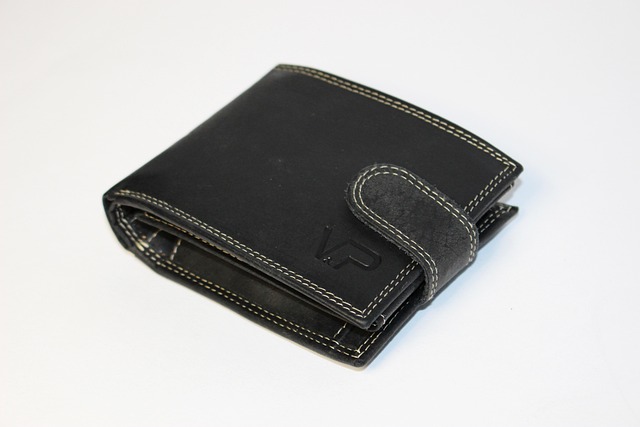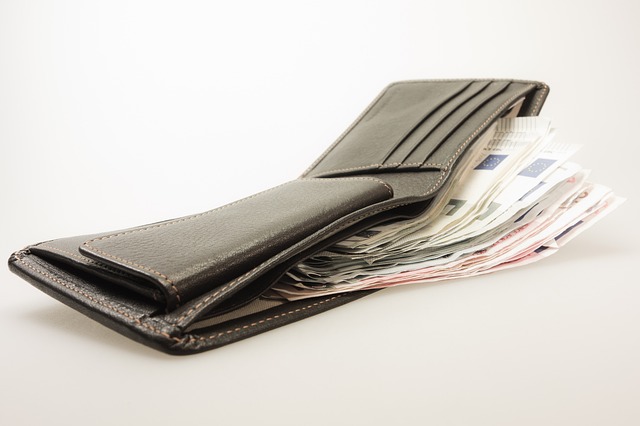Understanding Crypto Wallets: A Deep Dive
Author: Jameson Richman Expert
Published On: 2025-05-09
Prepared by Jameson Richman and our team of experts with over a decade of experience in cryptocurrency and digital asset analysis. Learn more about us.
Crypto wallets are an essential part of the cryptocurrency ecosystem, allowing users to store, send, and receive digital currencies securely. Over the years, I've encountered various challenges in understanding and utilizing crypto wallets effectively. My journey has been filled with trials and errors, but I finally managed to grasp the complexities involved, and I want to share my experiences with you. This article will delve deep into the world of crypto wallets, providing insights that can help you navigate this digital landscape.

Types of Crypto Wallets
When I first entered the crypto space, I was overwhelmed by the different types of wallets available. Each type has its advantages and disadvantages, and my initial attempts to use them often led to confusion. The main types of crypto wallets include:
- Hardware Wallets: These are physical devices that securely store your private keys offline. They are considered one of the safest options for long-term storage of cryptocurrencies. Popular hardware wallets include Ledger and Trezor. Hardware wallets are immune to online hacking attempts, as they require physical access to the device to compromise security. However, they are not entirely risk-free; losing the device or failing to back up recovery phrases can result in permanent loss of funds. Additionally, it's essential to purchase hardware wallets directly from the manufacturer or authorized sellers to avoid counterfeit devices. Hardware wallets often support a wide range of cryptocurrencies, making them versatile for users with diverse portfolios.
- Software Wallets: These wallets can be installed on your computer or smartphone. While they are more convenient for daily transactions, they are also more vulnerable to hacks. Examples include Exodus and Electrum. Software wallets come in two forms: hot wallets, which are connected to the internet, and cold wallets, which are not. Hot wallets are ideal for frequent transactions, whereas cold wallets provide increased security for long-term storage. It’s crucial to ensure that any software wallet you use is regularly updated to protect against the latest security vulnerabilities. Moreover, many software wallets offer features like built-in exchanges, allowing users to trade cryptocurrencies directly within the wallet.
- Paper Wallets: A paper wallet is a physical printout of your public and private keys. It is highly secure as it is offline but can be easily lost or damaged. For creating a paper wallet, it is crucial to use a reputable generator and ensure that your computer is secure and offline during the creation process to avoid exposure to malware. It is advisable to store paper wallets in a safe place, such as a safe deposit box, to minimize the risk of loss or theft. While paper wallets offer excellent security, they lack the convenience of other wallet types for transactions, making them best suited for long-term storage.
I remember the first time I tried to set up a software wallet. I thought it would be a straightforward process, but I quickly realized that I needed to understand the importance of private keys and seed phrases. A private key is a secret number that allows you to access your cryptocurrency, while a seed phrase is a series of words generated by your wallet to help recover access. One mistake could lead to losing access to my funds, which was a terrifying thought. Understanding the concept of public and private keys is essential; the public key is like your bank account number, which you can share with others, while the private key is your password that must be kept secret.
Choosing Reputable Exchanges and Wallets
After several failed attempts and a lot of research, I discovered the importance of using reputable exchanges and wallets. For instance, I started using Binance to manage my crypto assets. This platform offered a user-friendly interface and robust security features, such as two-factor authentication (2FA) and withdrawal whitelist options. I found that using a reputable exchange not only made transactions easier but also provided additional layers of security for my funds. Initially, I hesitated to trust an exchange, but Binance proved to be reliable, and I was able to securely store my cryptocurrencies there. It’s also important to regularly review the security policies of any exchange you use, as these can change over time. Moreover, examining an exchange’s history and user feedback can provide additional assurance about its reliability.
As I continued to explore the world of crypto wallets, I realized that there are many different options to choose from. Each wallet has unique features, and understanding these was crucial. For example, I learned about MEXC, another exchange that offers a comprehensive wallet solution. What stood out to me was its versatility in supporting various cryptocurrencies and the ease of transferring funds. MEXC also provides advanced trading options, such as futures and margin trading, which can be beneficial for more experienced users. I found that this wallet allowed me to diversify my portfolio more efficiently. Additionally, always ensure to read user reviews and check the exchange’s reputation on forums like Reddit or specialized crypto review sites.
Best Practices for Wallet Management
However, my journey wasn't without its hiccups. I made the mistake of not backing up my wallet correctly once, which resulted in me losing access to a small amount of cryptocurrency. This experience taught me the critical importance of proper wallet management. Backing up your wallet ensures that you can recover your funds in case of a device failure or loss. I can't stress this enough; always make sure to follow best practices when it comes to wallet backups, such as securely storing recovery phrases in multiple physical locations and using encrypted digital storage if necessary. Additionally, regularly review and update your security measures, and consider using multi-signature wallets for additional protection. Multi-signature wallets require multiple private keys to authorize a transaction, adding an extra layer of security for your assets.

Exploring Advanced Features
Eventually, I stumbled upon Bitget, which further broadened my understanding of crypto wallets. Bitget is more than just a trading platform; it provides unique features like copy trading, which has become a valuable tool for me. This feature allows users to mimic the trades of successful traders, making it easier for beginners like me to navigate the complex world of crypto trading. Additionally, Bitget offers a range of educational resources, helping users to understand market trends and trading strategies. Leveraging these resources can significantly improve trading outcomes, especially for those new to the crypto landscape. Furthermore, Bitget’s user-friendly interface and customer support make it an attractive option for both new and seasoned traders.
The Role of Security in Crypto Wallets
My experiences have taught me that crypto wallets are not just tools for storing assets; they are gateways to the cryptocurrency ecosystem. Each transaction requires understanding how wallets operate, which is something I initially struggled with. By researching and experimenting with different wallets, I've gained a better grasp of how to use them effectively. For those interested in learning more, you can check out The Ultimate Guide to Crypto Wallets, which offers a comprehensive overview of various wallet types and their functionalities. Always remember that the security of your crypto assets is largely dependent on the precautions you take.
In addition to exploring wallets, I also learned about the importance of security features. For instance, Bybit offers features like two-factor authentication (2FA) and withdrawal whitelist options, which are crucial for protecting your assets. Initially, I found these security measures to be an inconvenience, but I soon realized that they are necessary to safeguard my investments. Moreover, I began utilizing hardware wallets for larger amounts of cryptocurrency, as they provide an extra layer of security against online threats. It’s advisable to regularly review your wallet's security settings and stay informed about new security practices in the crypto world. Additionally, always be cautious of phishing attempts and ensure you are using official websites and applications.
Enhancing Trading Success with Signals
Throughout my journey, I have also encountered various crypto signals and trading strategies. Understanding these signals can significantly enhance your trading experience. I recommend checking out Unlock Explosive Crypto Signals Today for insights into how to leverage signals effectively in your trading strategy. Learning how to interpret these signals has been invaluable in my trading success, allowing me to make more informed decisions and avoid emotional trading. Additionally, consider joining trading communities to share insights and strategies with others. Engaging with like-minded individuals can help you stay updated on market trends and strategies.

Conclusion
In conclusion, my experiences with crypto wallets have been a rollercoaster ride filled with challenges, mistakes, and ultimately, success. I hope that by sharing my journey, I can help others avoid the pitfalls I encountered. Remember, the world of cryptocurrency can be complex, but with the right tools, knowledge, and precautions, you can navigate it successfully. Always prioritize security, choose reputable wallets and exchanges, and continue educating yourself about the ever-evolving landscape of cryptocurrency.
As you embark on your own crypto journey, I encourage you to be patient and persistent. The lessons you learn along the way will only enhance your understanding and help you make informed decisions. Good luck!